Postcards From the West: Union Station and environs
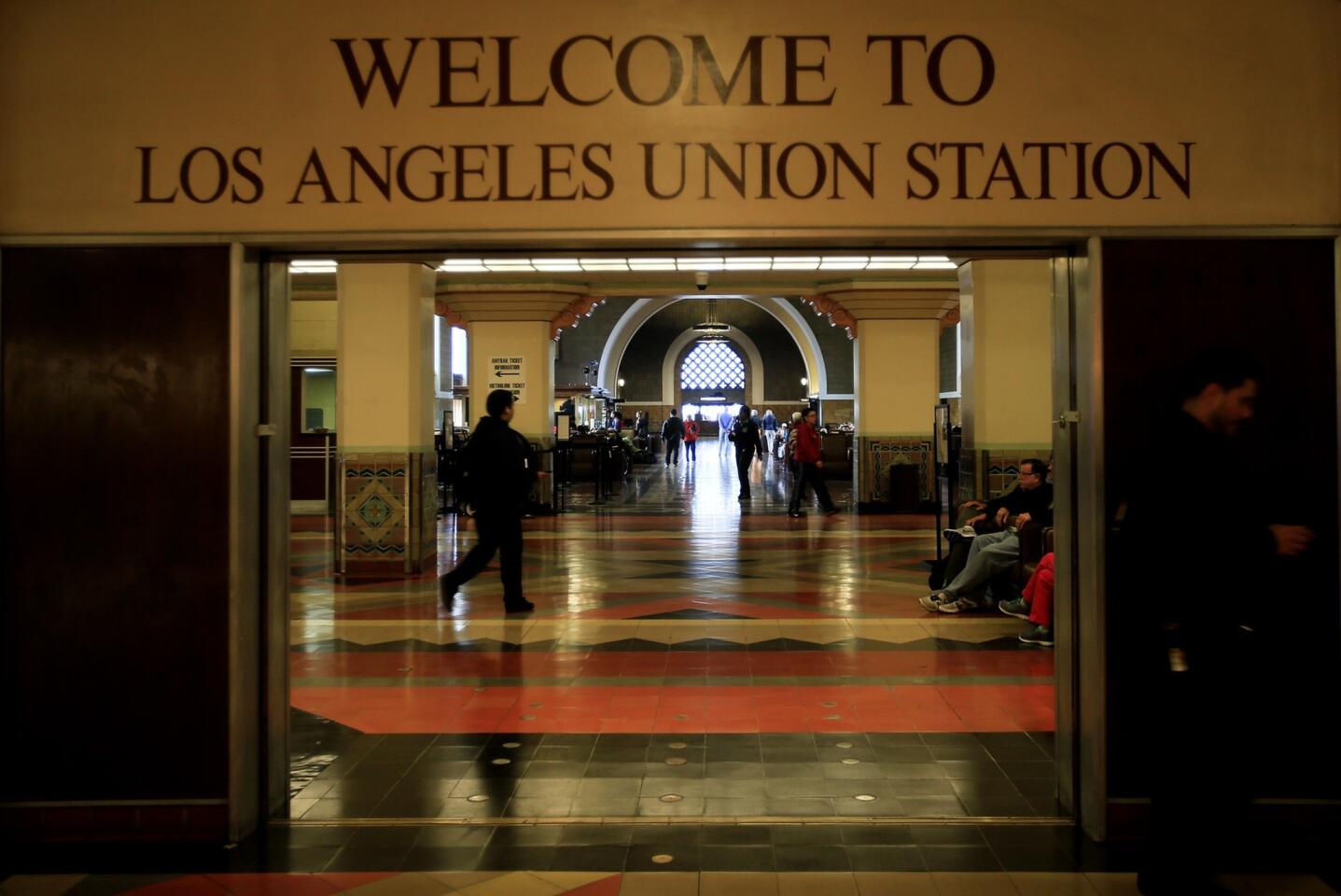
A welcome sign greets passengers arriving to Union Station. (Mark Boster / Los Angeles Times)
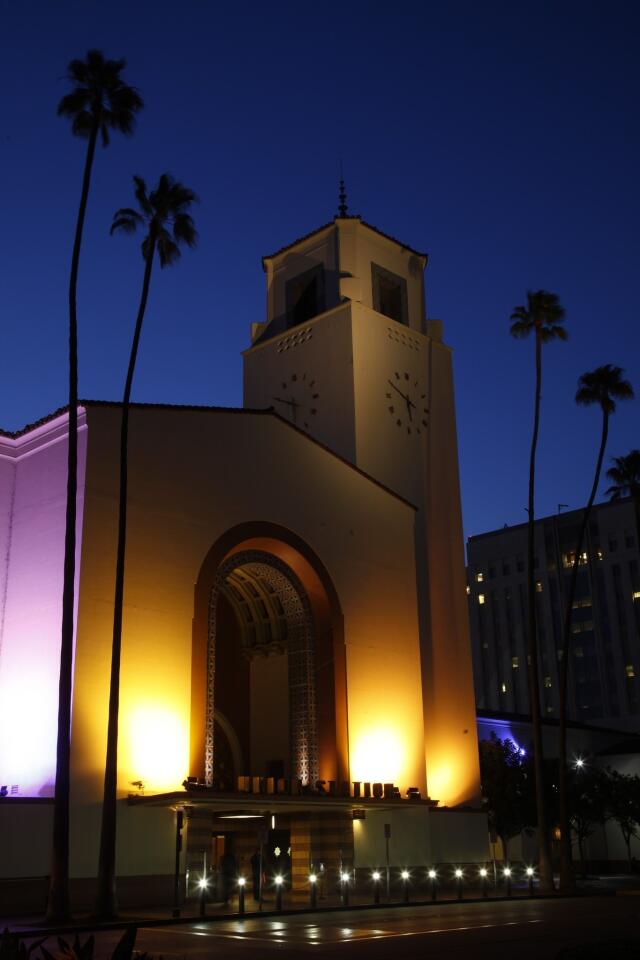
Born in 1939, Union Station is the last of the great American train stations. After a dismal slog through the late 20th century, it is busier than ever, with about 10 times the traffic it had in its prosperous early years. (Mark Boster / Los Angeles Times)
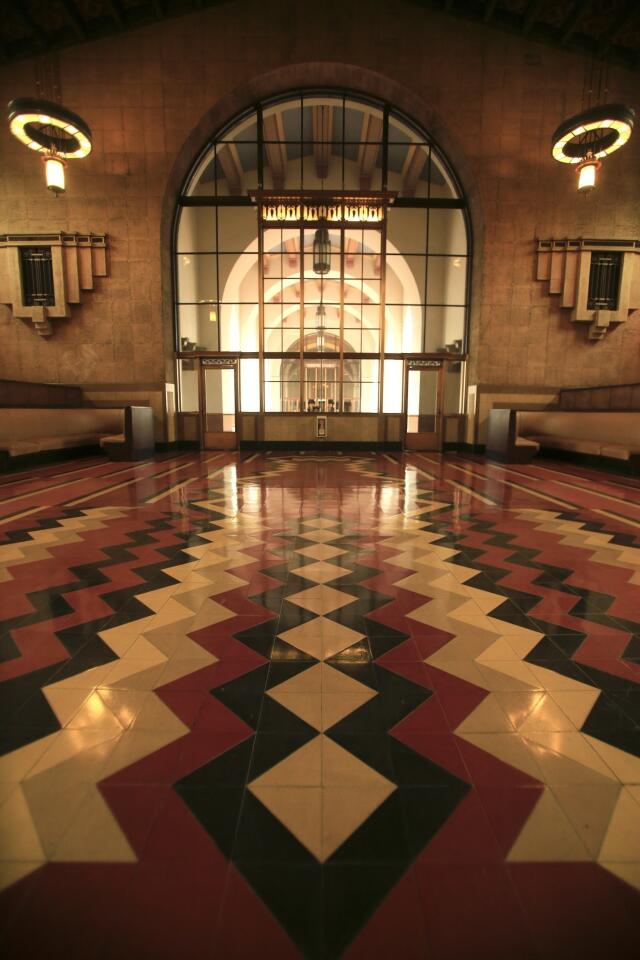
Across the arcade, you have a space once occupied by the station’s original restaurant, a Harvey House designed by Southwestern architect Mary Colter. (Mark Boster / Los Angeles Times)
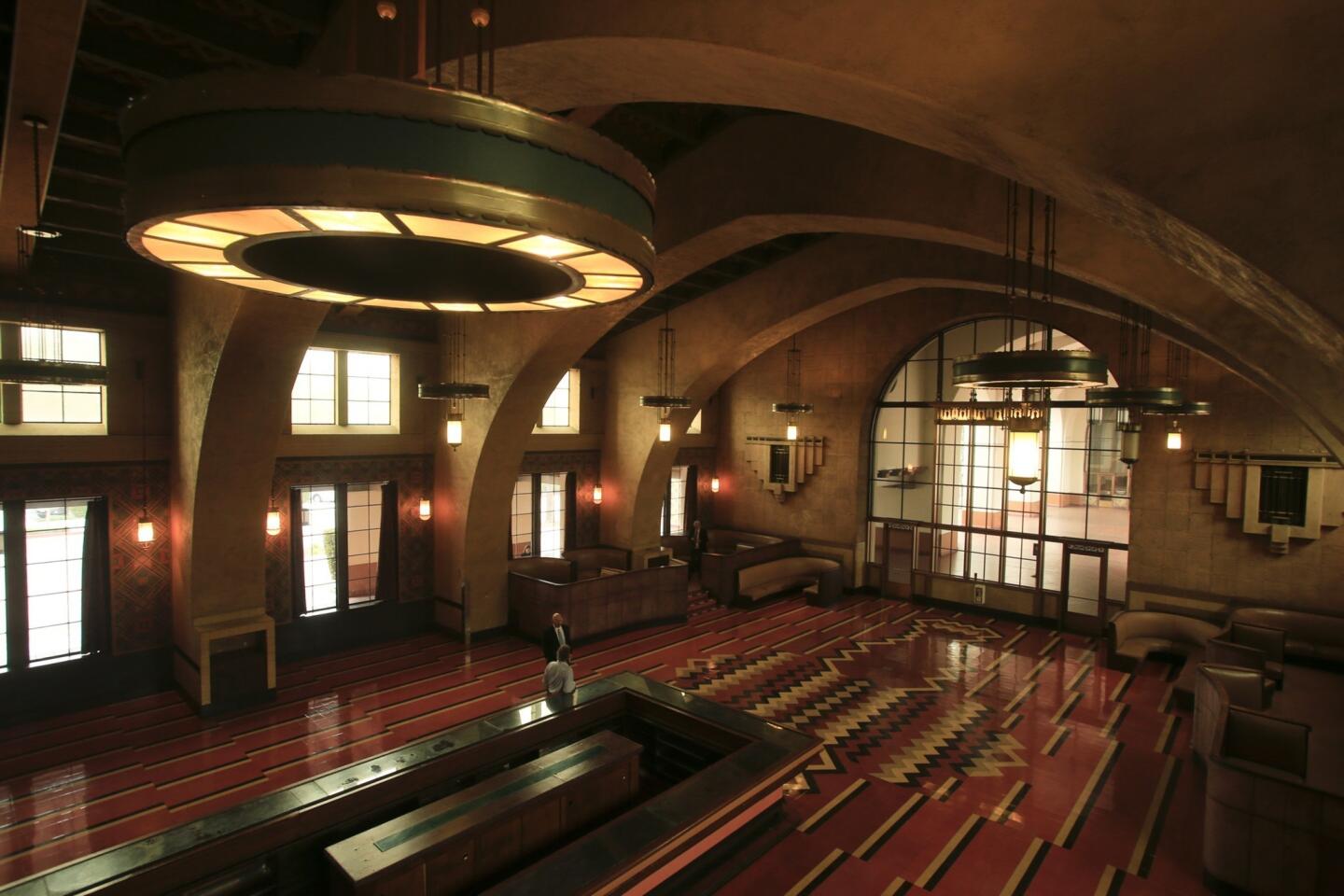
The restaurant has been closed (except for film shoots and special events) for decades. (Mark Boster / Los Angeles Times)
Advertisement
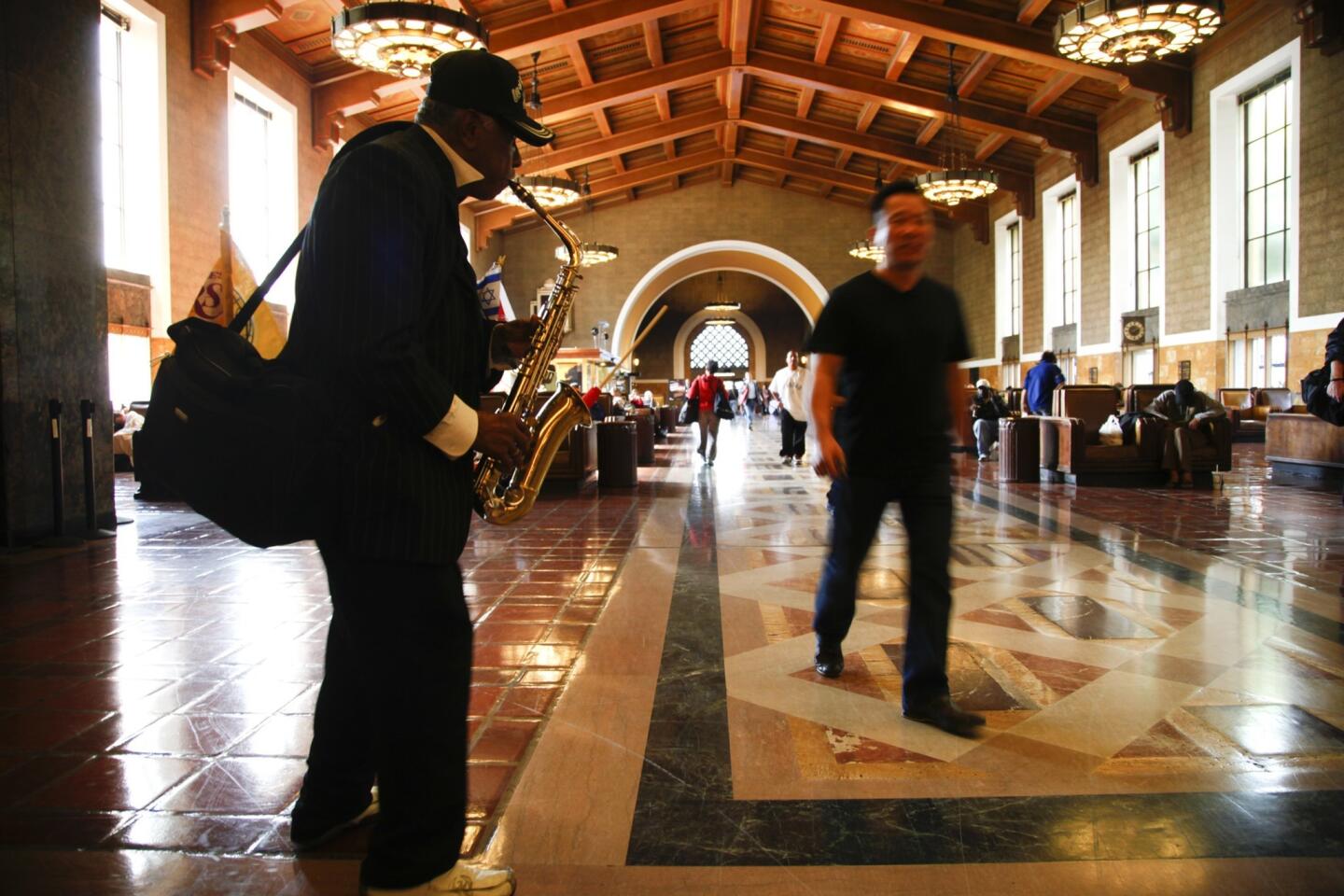
Retired bus driver Ruben Rodriquez plays the saxophone, and sometimes his guitar, for travelers passing through. (Mark Boster / Los Angeles Times)
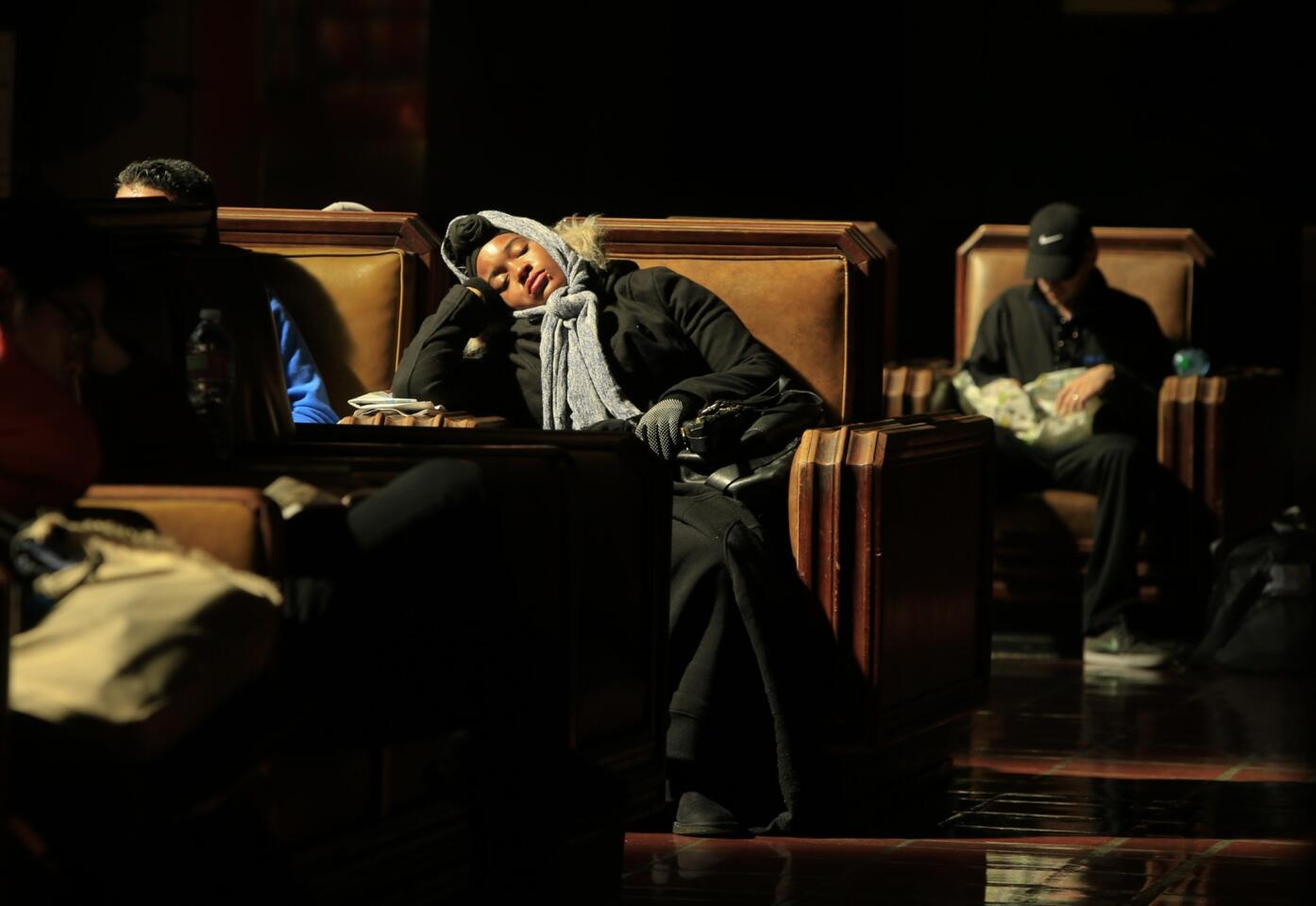
Guests rest on the station’s original leather-and-mahogany armchairs. (Mark Boster / Los Angeles Times)
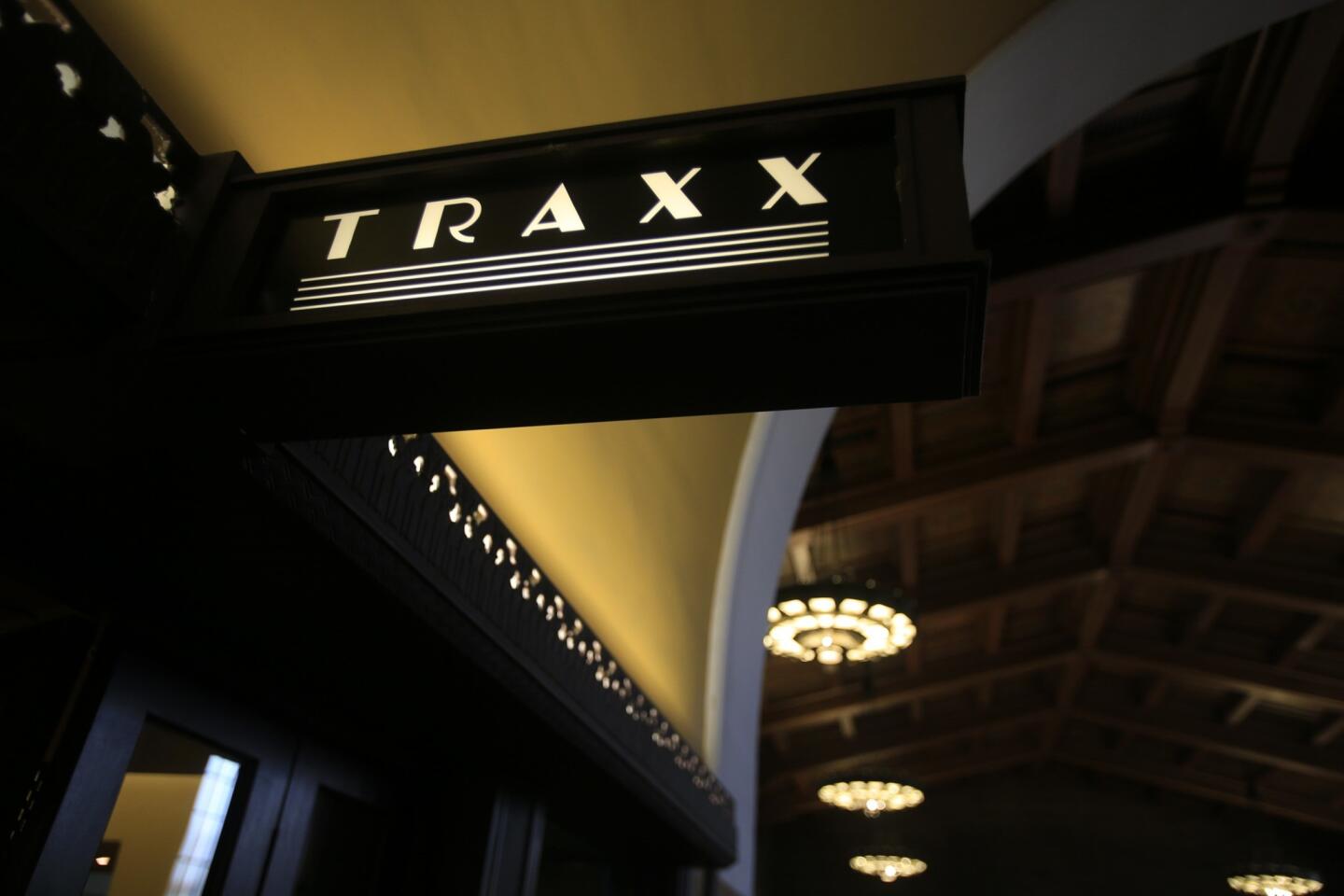
Among the food options at the station is Traxx Restaurant, located near the front entrance. (Mark Boster / Los Angeles Times)
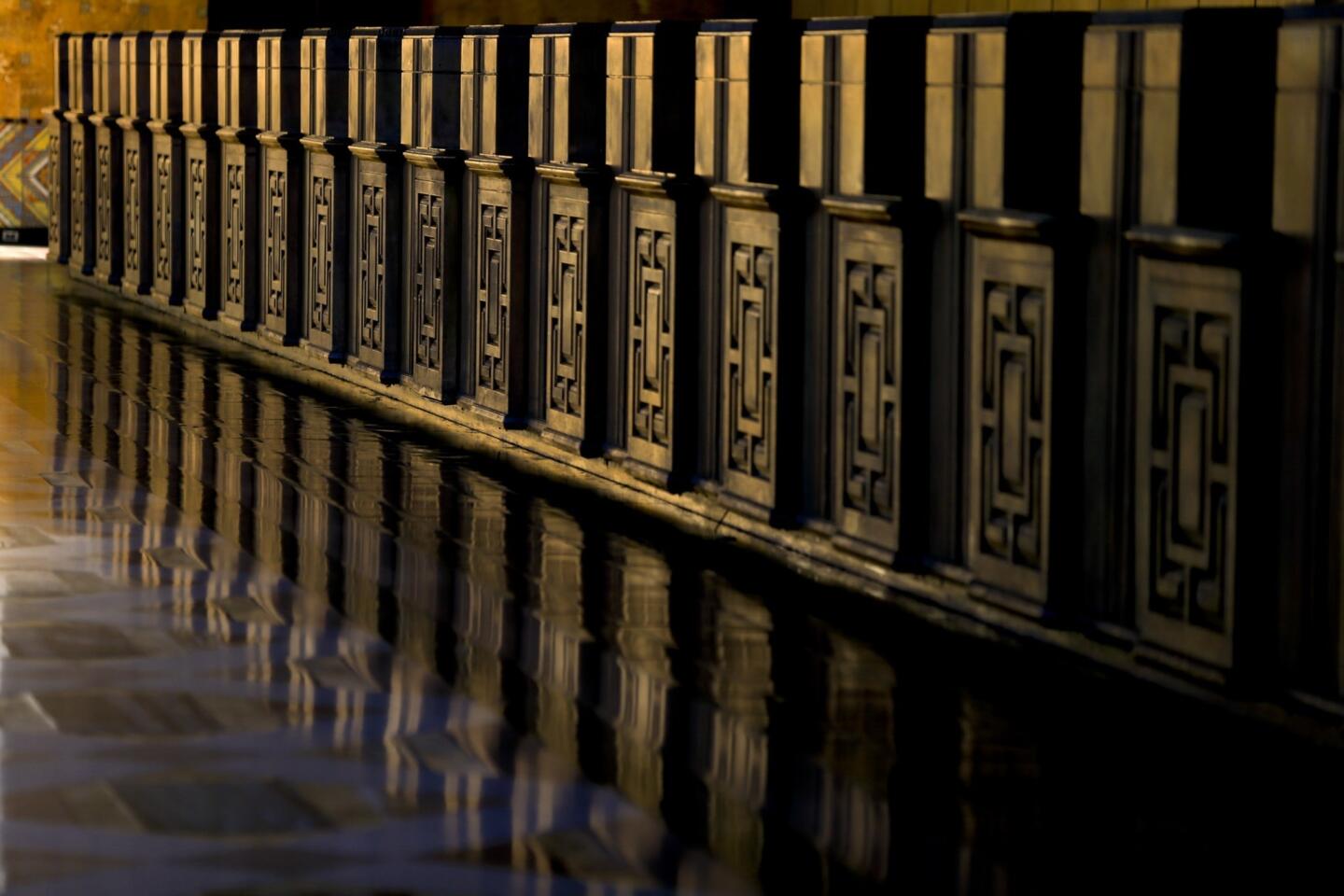
Civilians aren’t allowed to walk through the old ticket concourse, but you can gain access by participating in an L.A. Conservancy tour. (Mark Boster / Los Angeles Times)
Advertisement
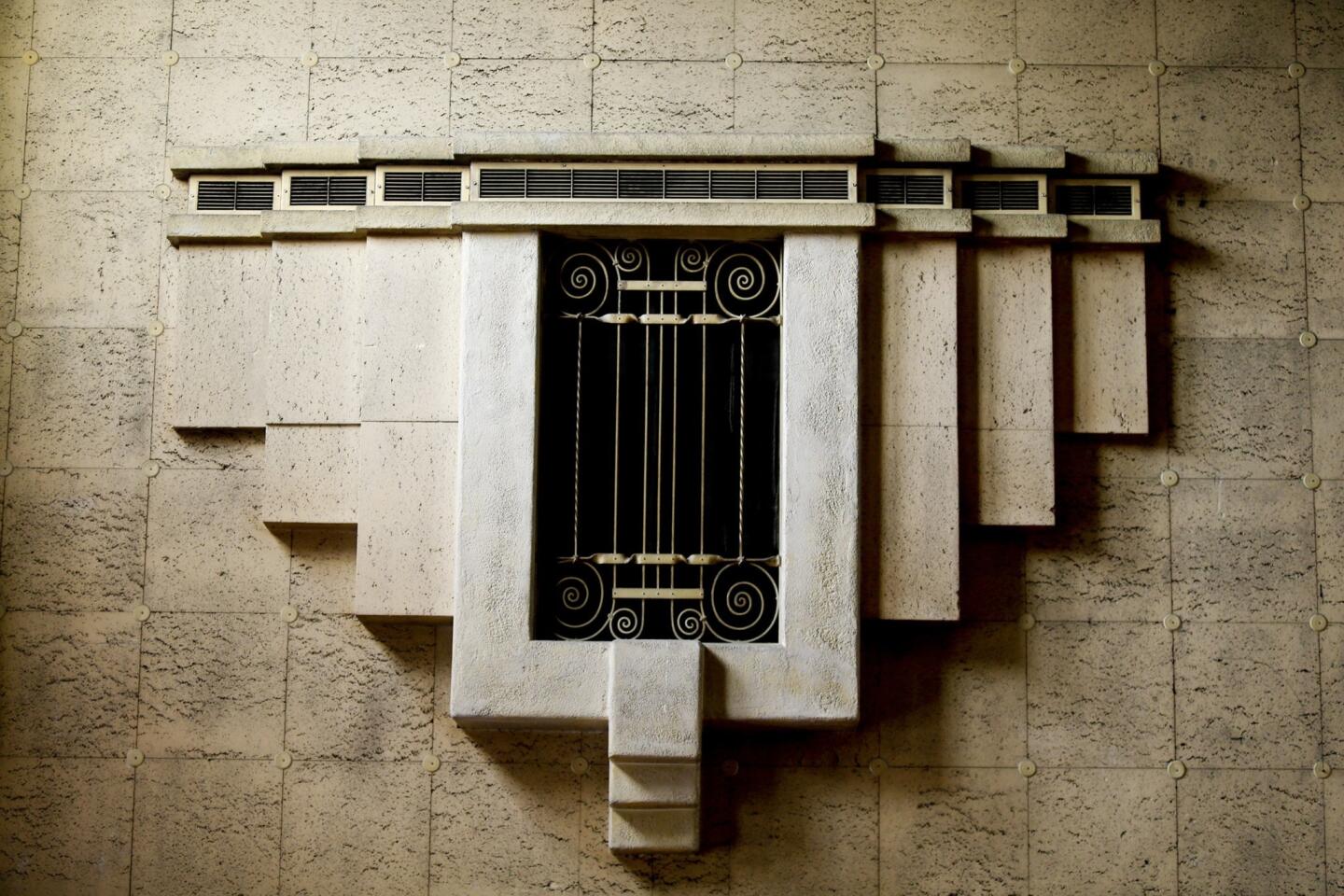
The architectural details found around the station lend it charm. (Mark Boster / Los Angeles Times)
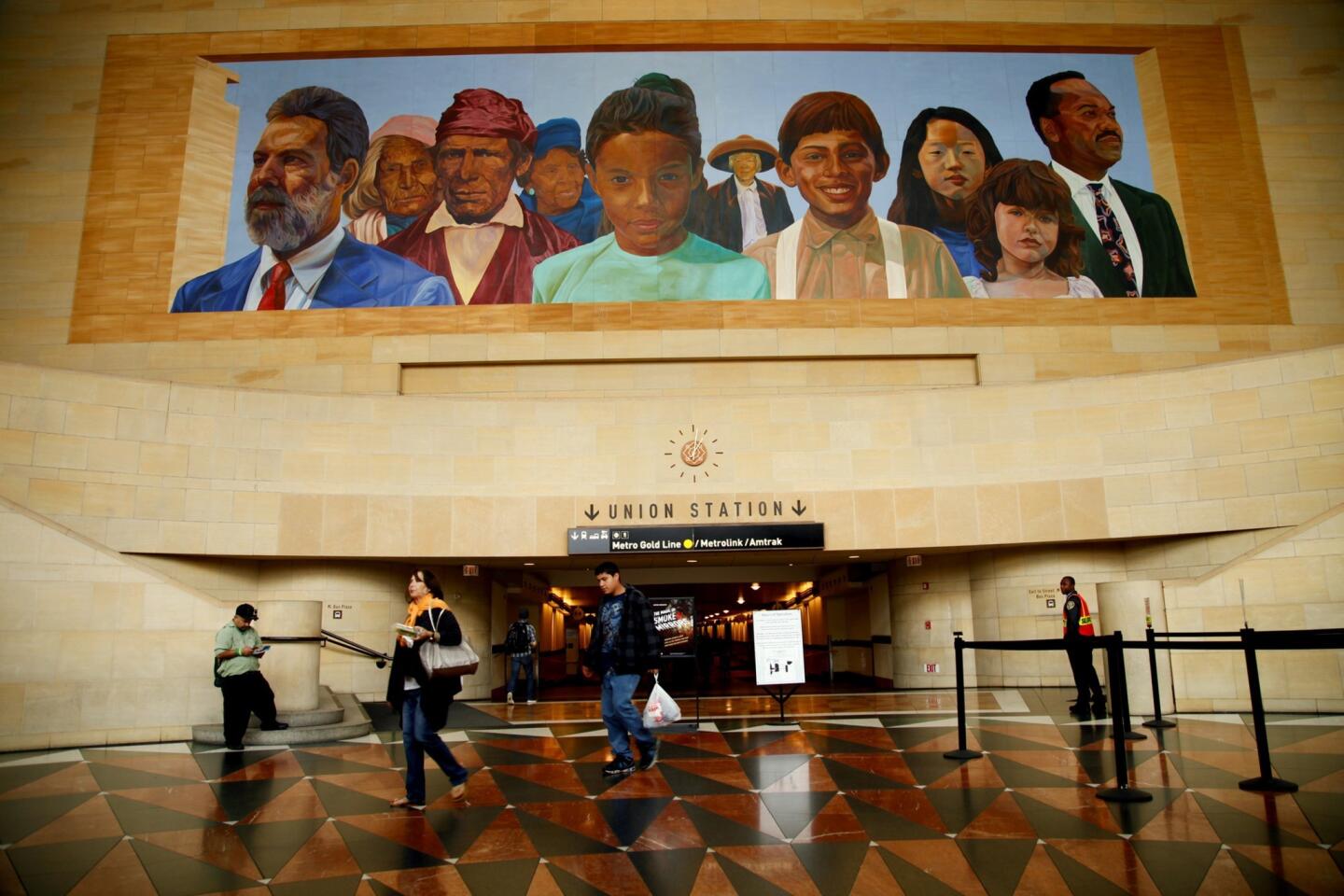
An 80-foot-wide multicultural mural of L.A. faces by Richard Wyatt looms over the east portal of Union Station. (Mark Boster / Los Angeles Times)
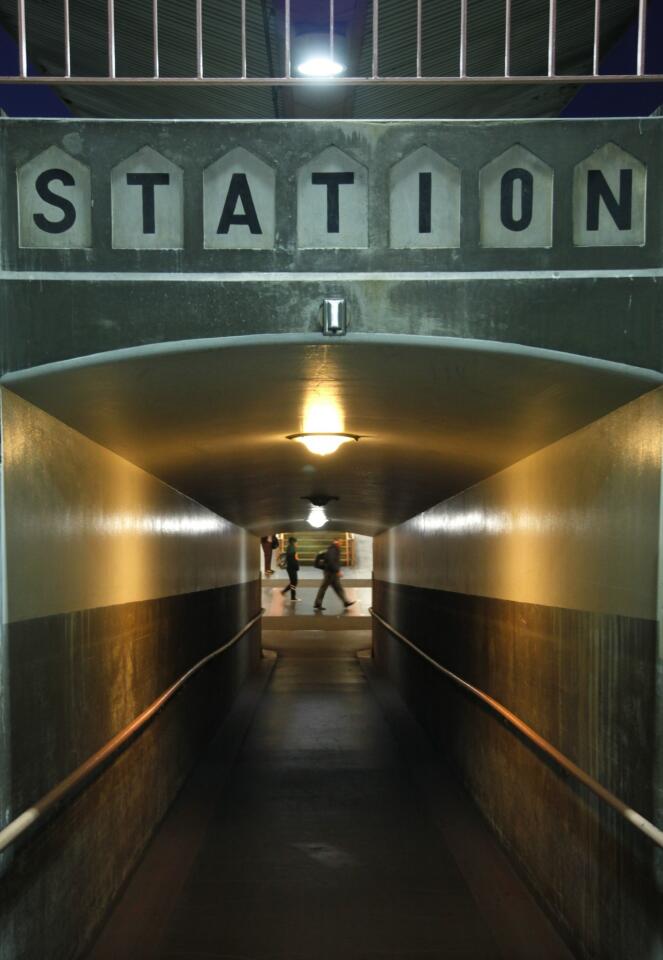
A tunnel leading from a train platform to the interior of Union Station. (Mark Boster / Los Angeles Times)
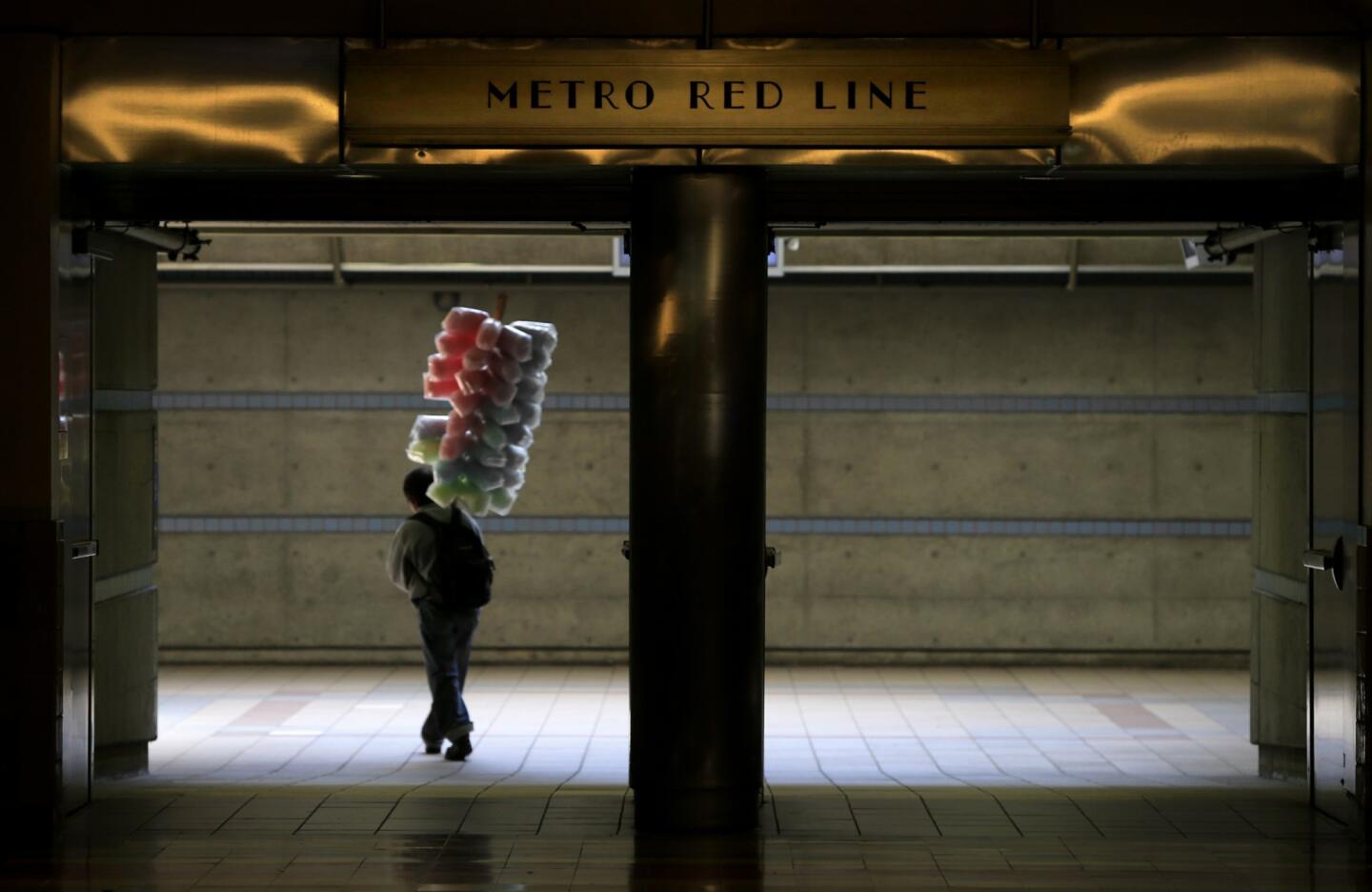
A cotton candy vendor walks through the entrance to the Metro Red Line. (Mark Boster / Los Angeles Times)
Advertisement
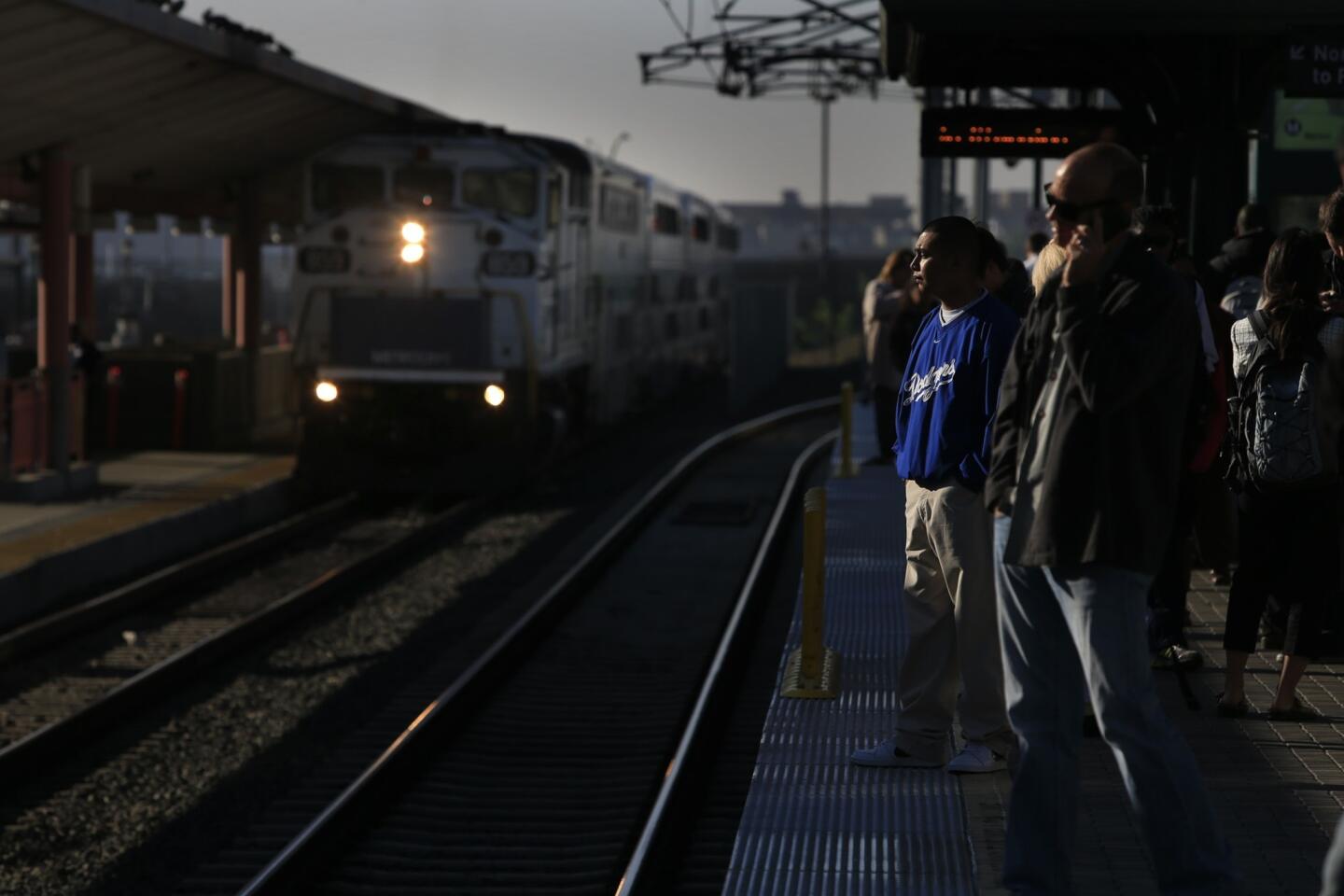
Early morning commuters wait for their train. (Mark Boster / Los Angeles Times)
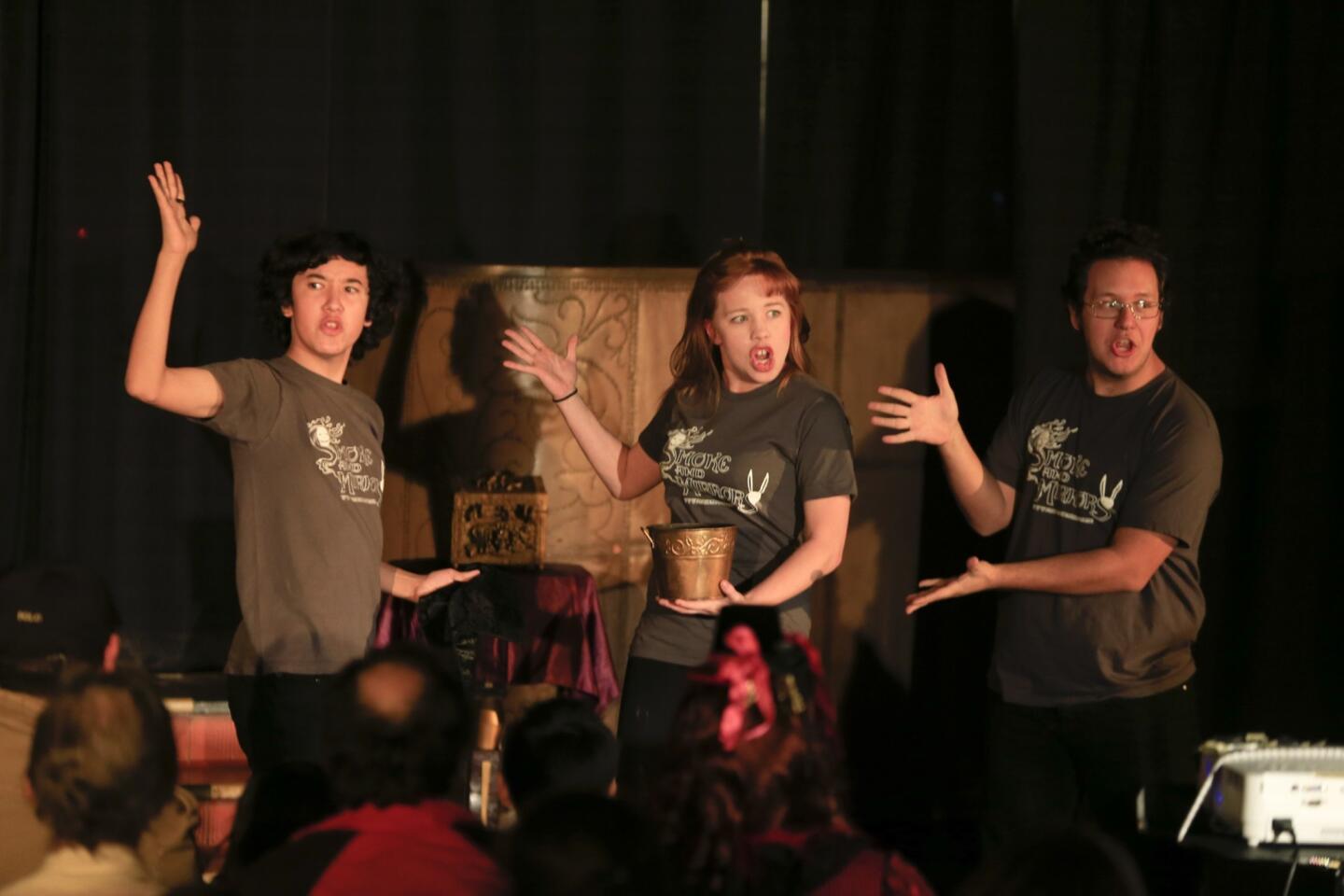
Patrons watch the magic show “Smoke and Mirrors” at the Harvey House restaurant pavilion. (Mark Boster / Los Angeles Times)
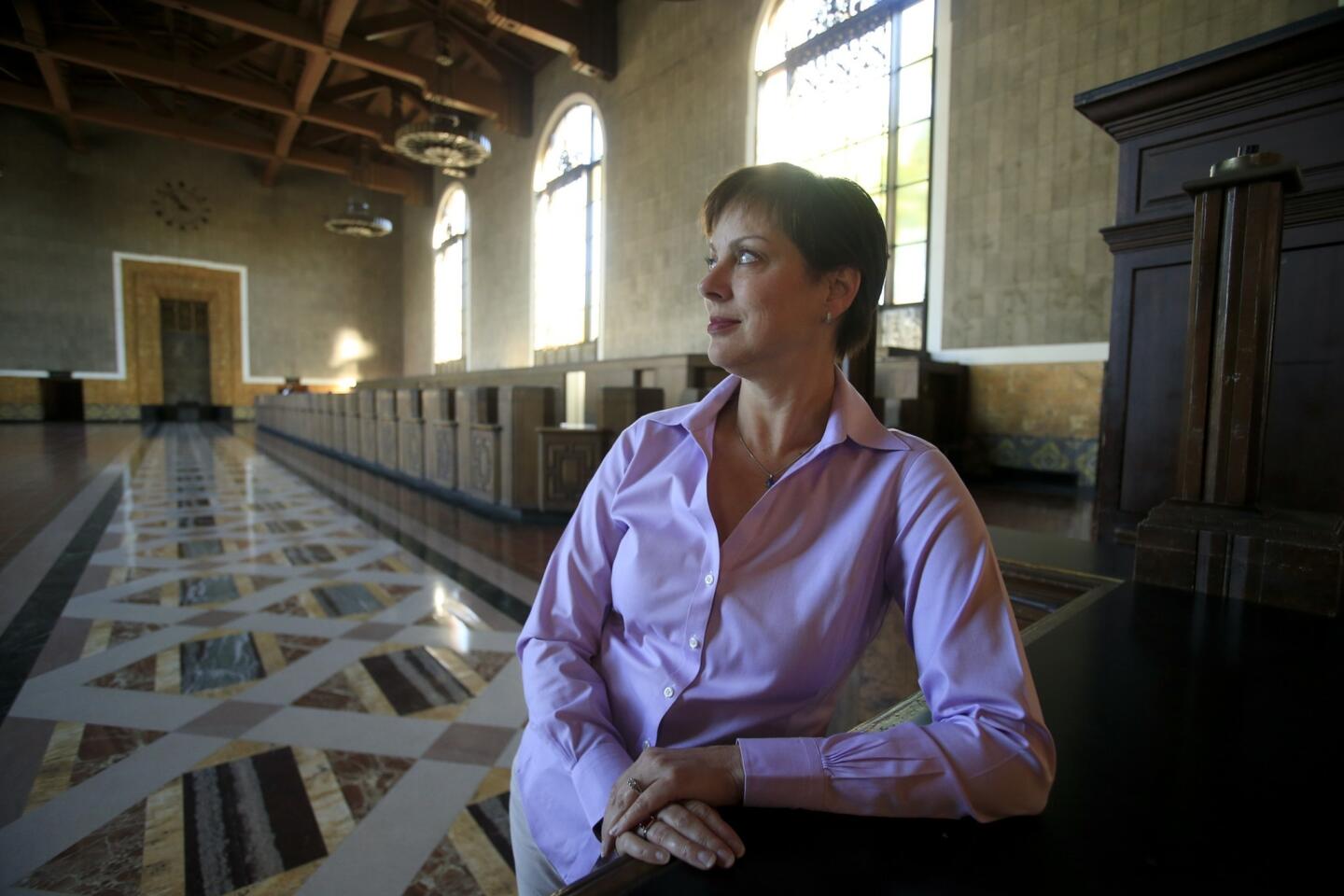
L.A. Conservancy tour volunteer Holly Kane has guided groups through Union Station since 2009. (Mark Boster / Los Angeles Times)
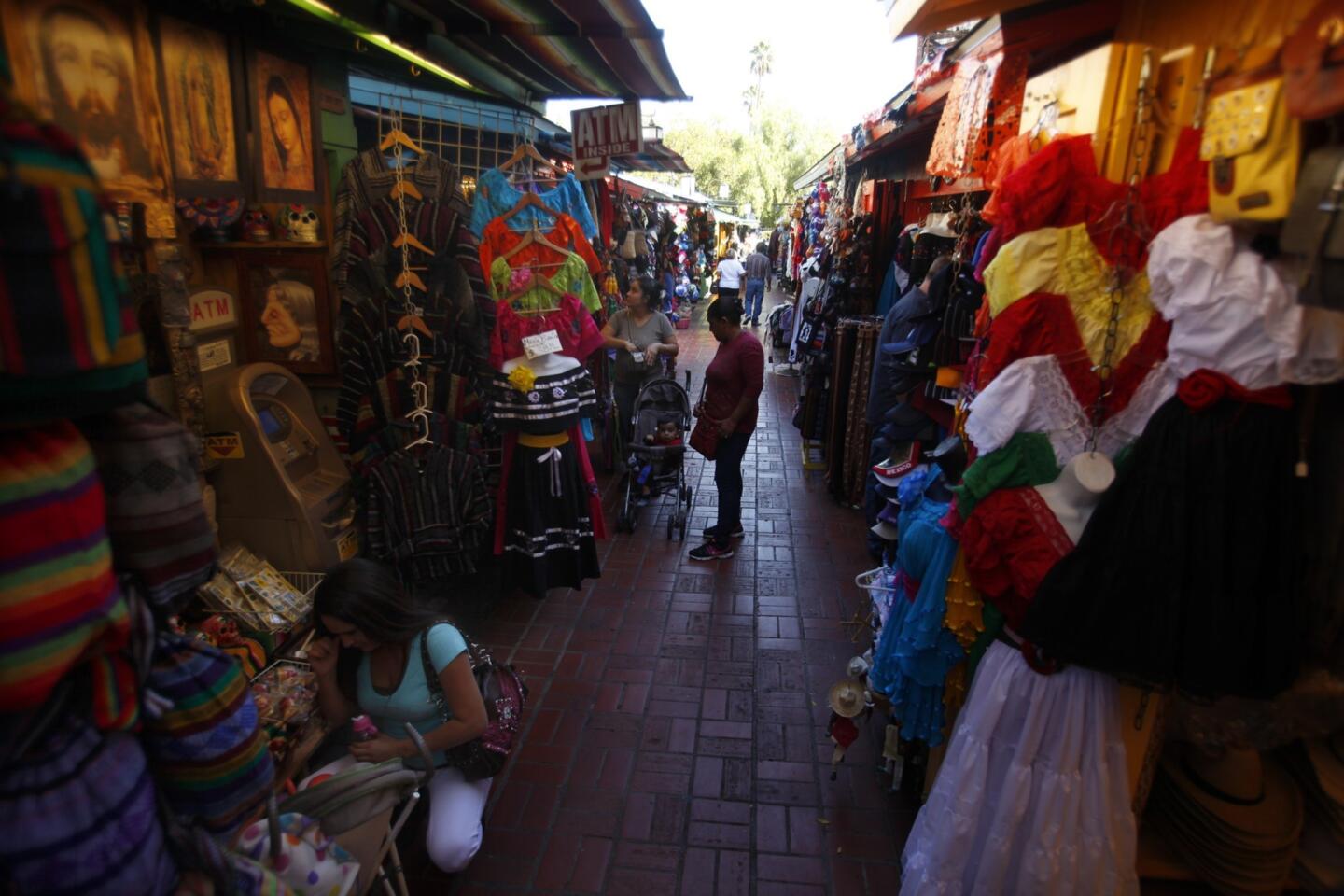
Olvera Street is part of the 44-acre El Pueblo de Los Angeles Historic Monument. The brick walkways, bougainvillea and fig trees are pleasant, and the Chinese American Museum, Avila Adobe and other small organizations offer interesting history. Vendors sell leather goods, wrestler masks, hats, pinatas, blankets, T-shirts, toy guitars and “Scarface” posters. (Mark Boster / Los Angeles Times)
Advertisement
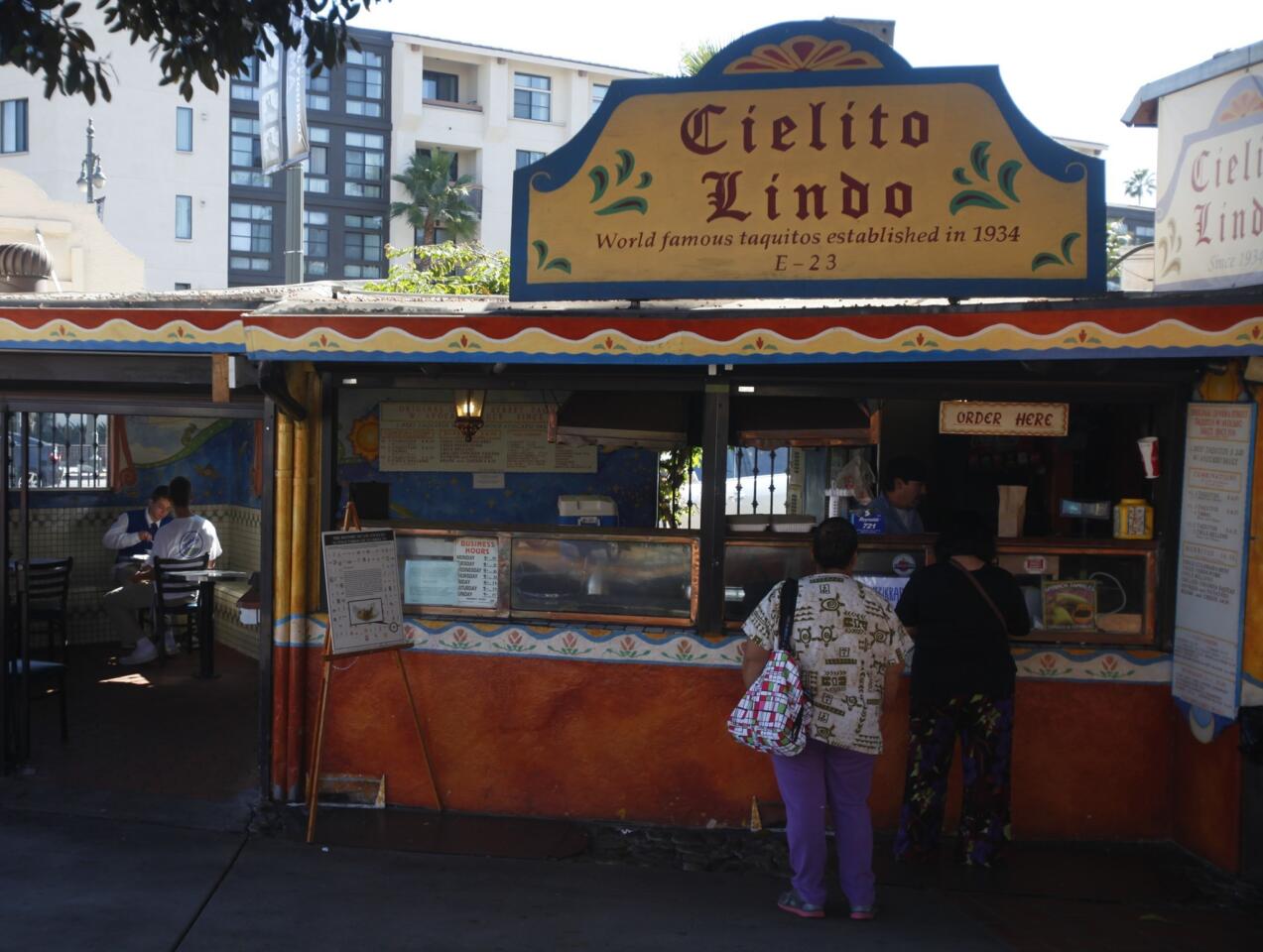
Cielito Lindo is a taqueria that dates to 1934. For $3 you get two beef taquitos dipped in guacamole sauce. (Mark Boster / Los Angeles Times)
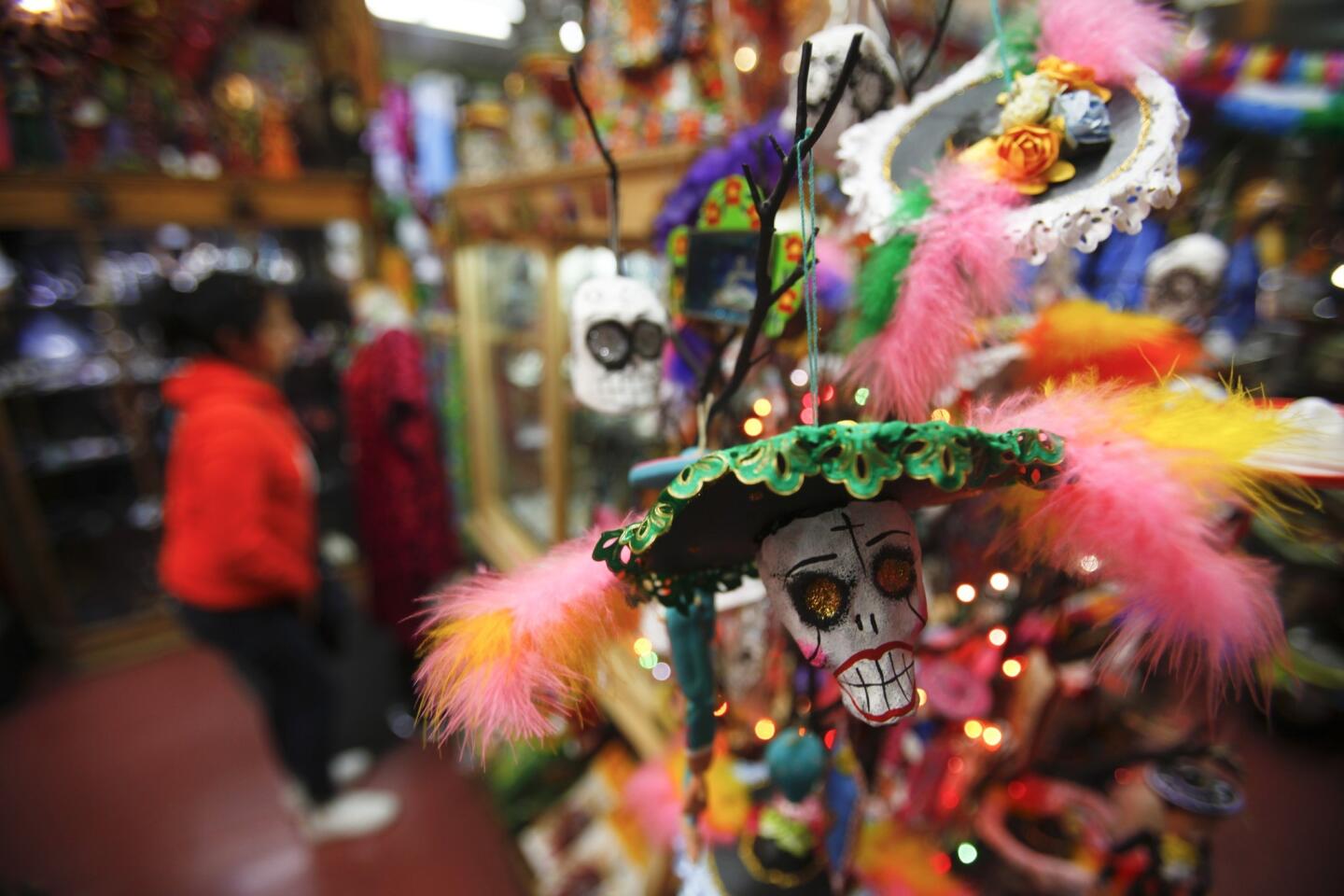
Olveritas, an upstairs shop, sells trinkets and other tourist items on Olvera Street. (Mark Boster / Los Angeles Times)
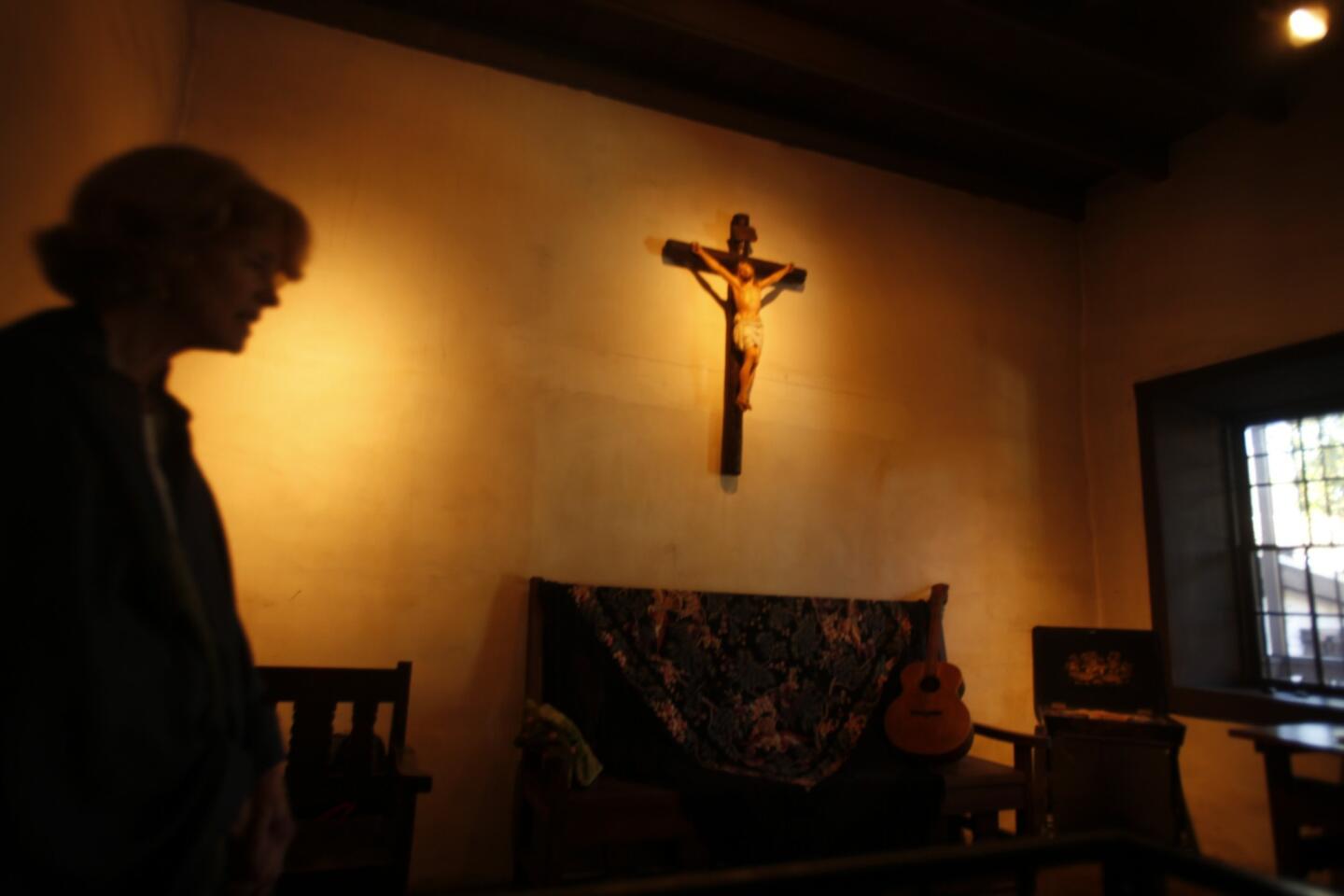
The Avila Adobe on Olvera Street is one of the oldest buildings in Los Angeles. (Mark Boster / Los Angeles Times)
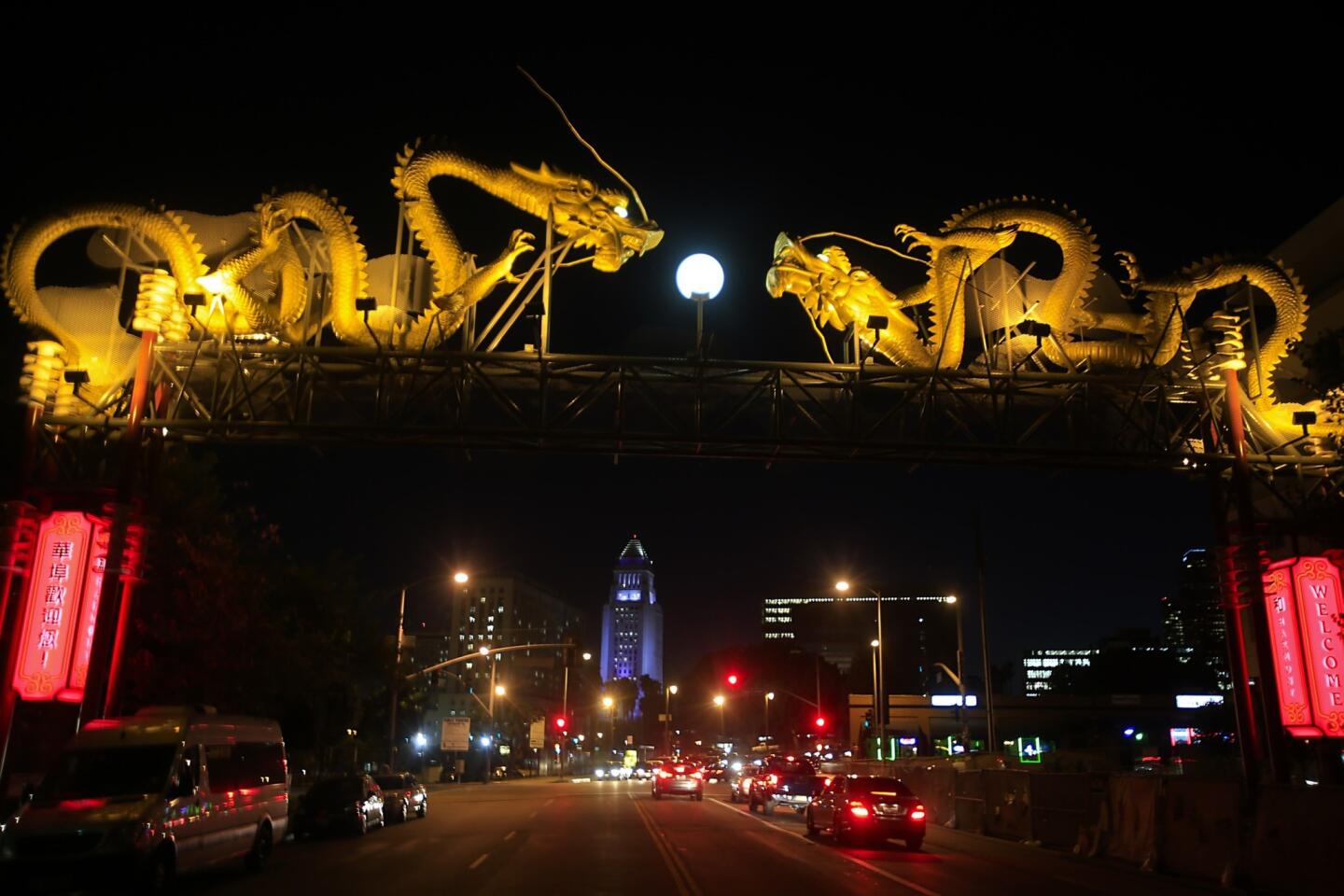
The gateway to Chinatown is just a short walk from Union Station. (Mark Boster / Los Angeles Times)
Advertisement
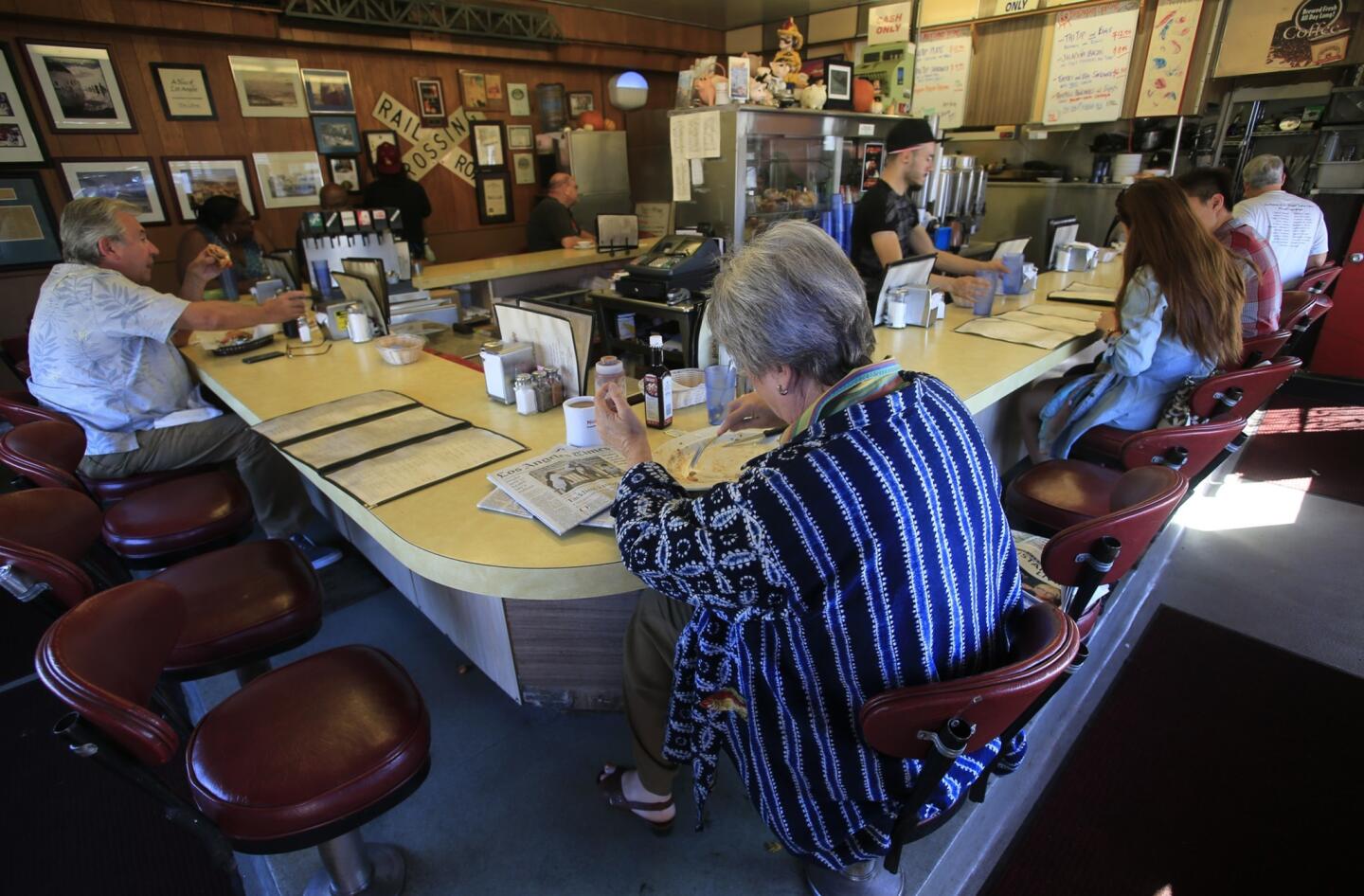
For a hearty ham-and-eggs breakfast near the tracks, head for the horseshoe bar at Nick’s Cafe. It dates to 1948 and stands across Spring Street from Los Angeles State Historic Park (a.k.a. the Cornfield). (Mark Boster / Los Angeles Times)
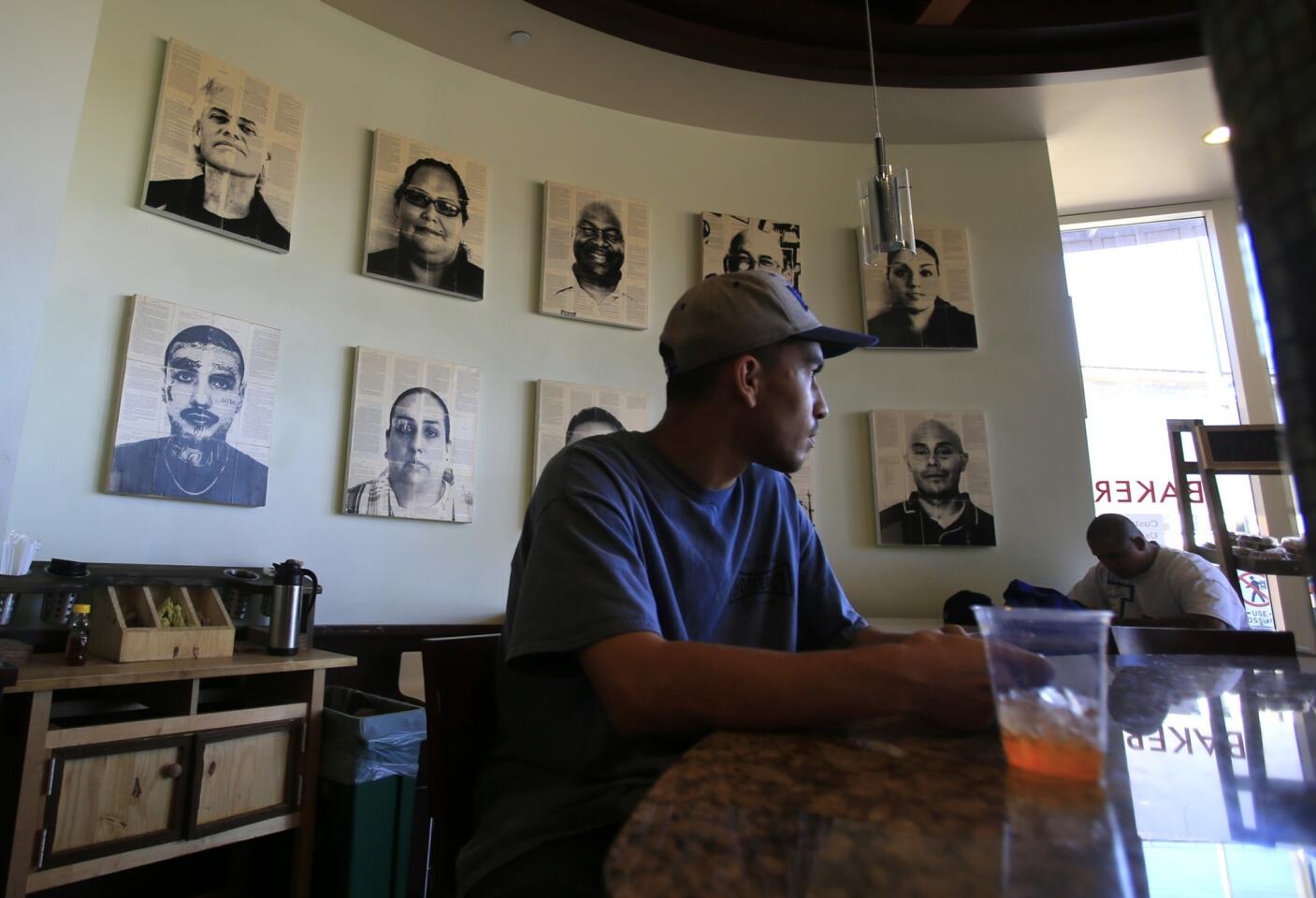
Homegirl Cafe, three blocks north of Union Station and across the street from the Gold Line’s Chinatown station, is a nonprofit effort training city kids to run a restaurant. It has bright, pleasant dining room and an arresting batch of black-and-white portraits near the door that look a bit like mug shots. (Mark Boster / Los Angeles Times)
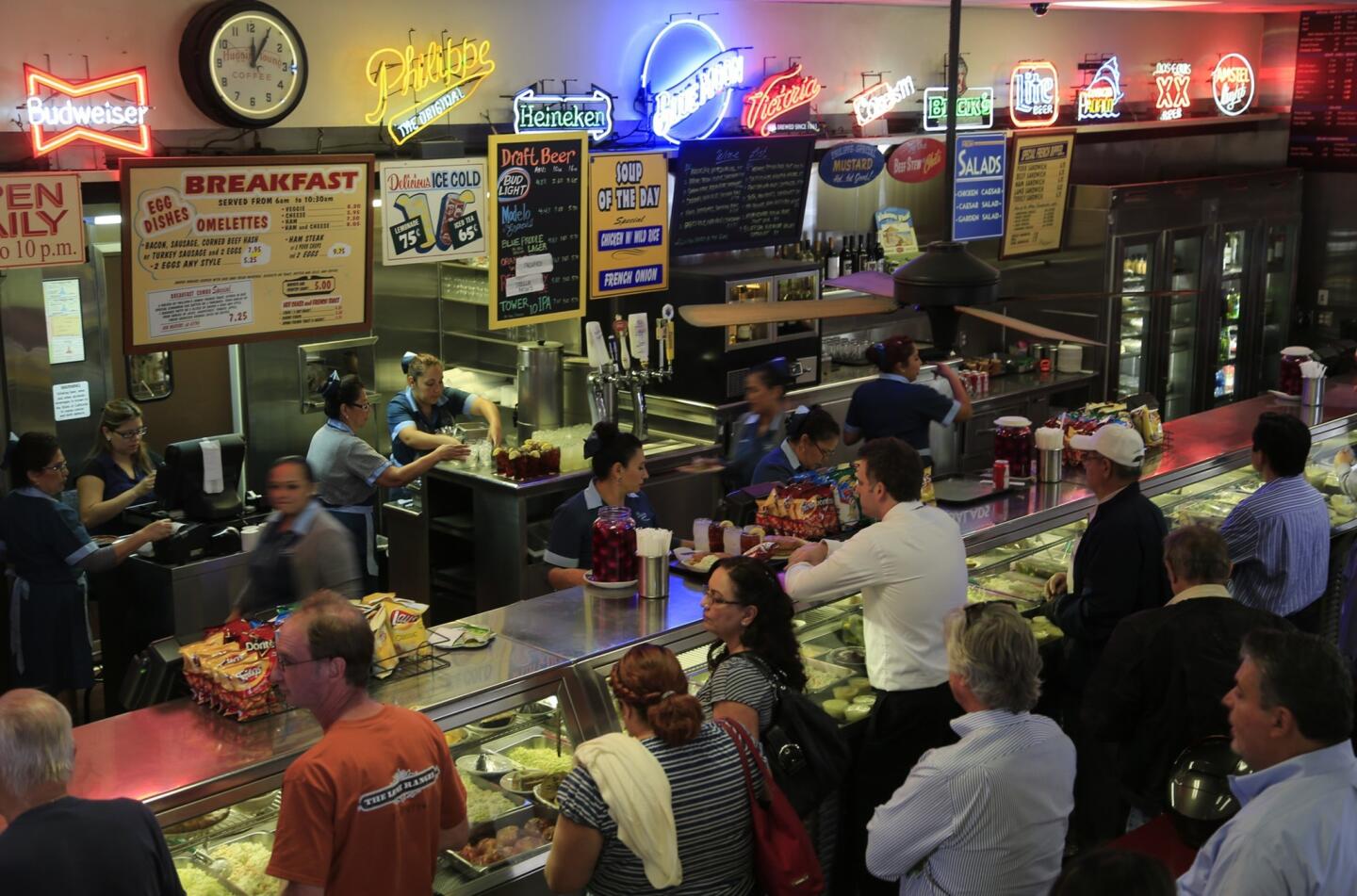
Philippe the Original in Chinatown, famous for its French dips, has been serving customers for over 100 years. (Mark Boster / Los Angeles Times)
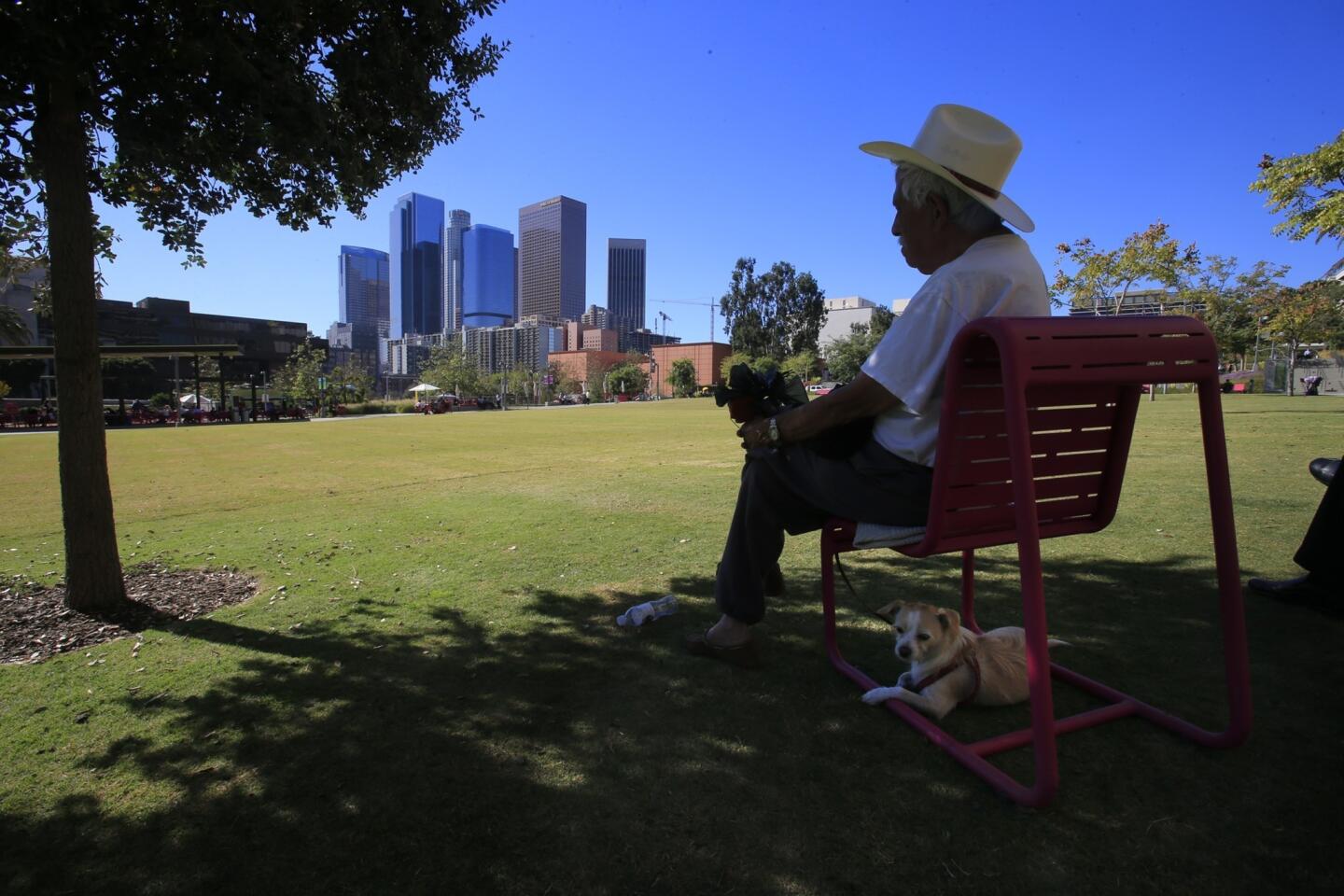
The 12-acre Grand Park was unveiled in 2012. Near the east (downhill) end, which faces City Hall, you’ll find startling pink chairs and tables. Near the west (uphill) end, across from the Music Center, is a new Starbucks-adjacent fountain, where kids can wade. (Mark Boster / Los Angeles Times)
Advertisement
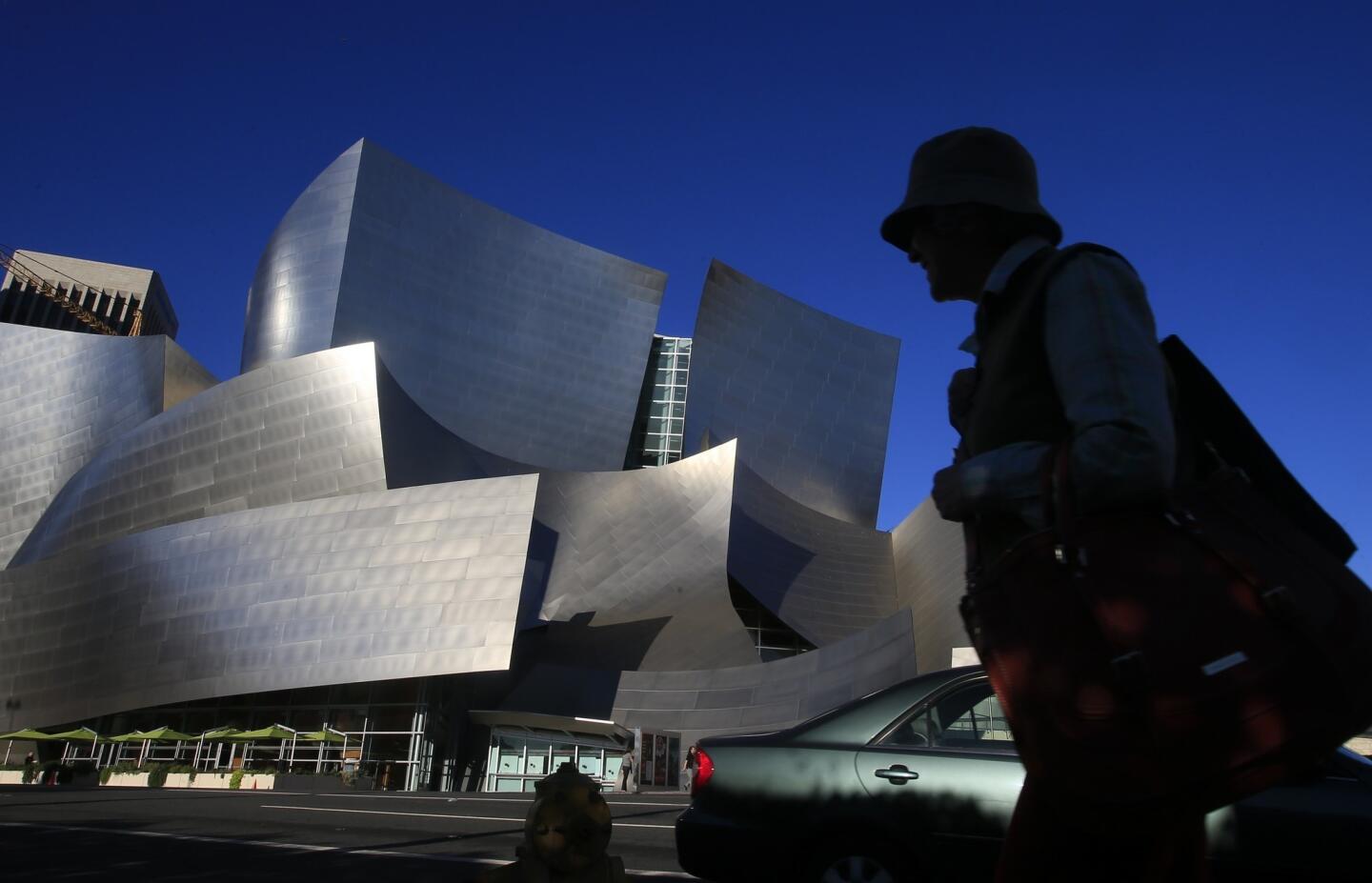
Walt Disney Concert Hall, located across from Grand Park, is home to the Los Angeles Philharmonic. (Mark Boster / Los Angeles Times)
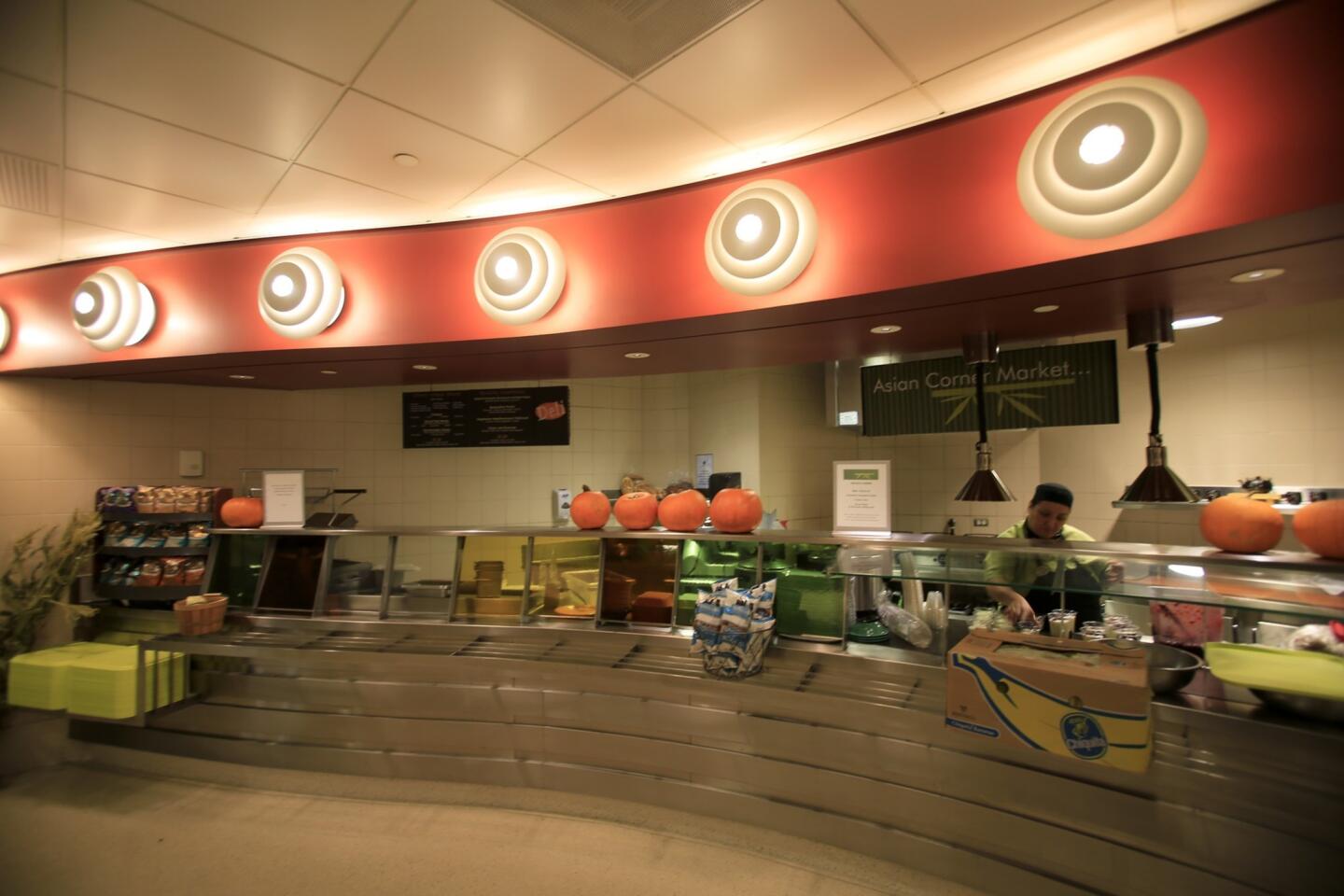
The cafe at the Colburn School, a performing arts conservatory. (Mark Boster / Los Angeles Times)
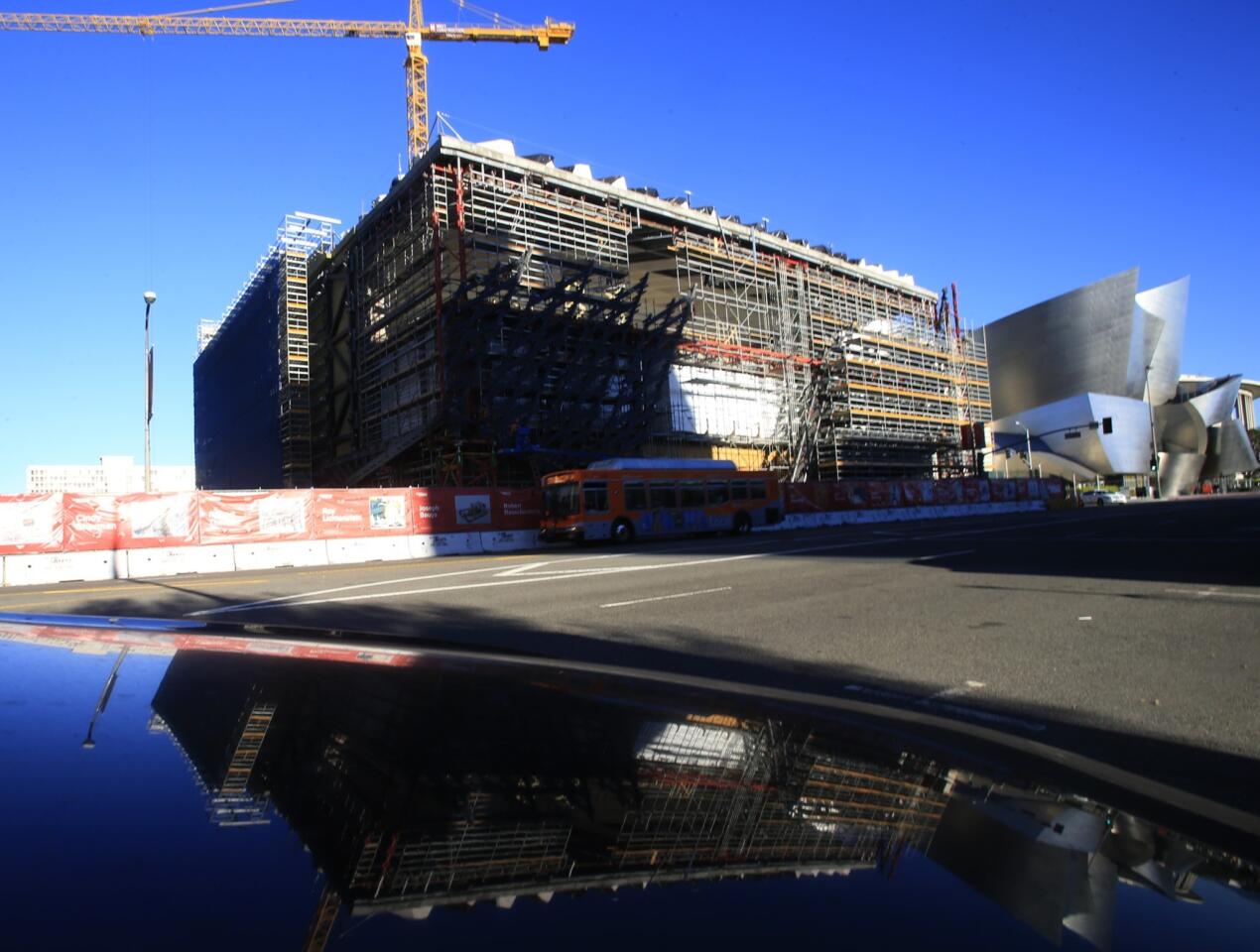
In late 2014, the Broad, a contemporary art space bankrolled by mega-philanthropists Eli and Edythe Broad, is expected to open across the street from MOCA. (Mark Boster / Los Angeles Times)



